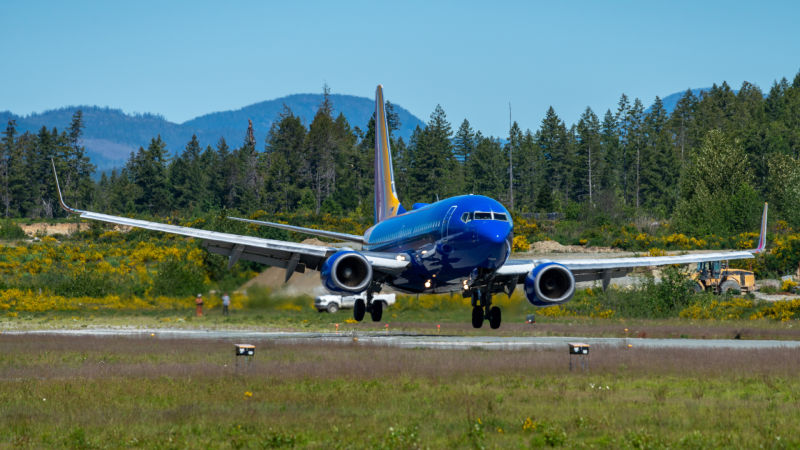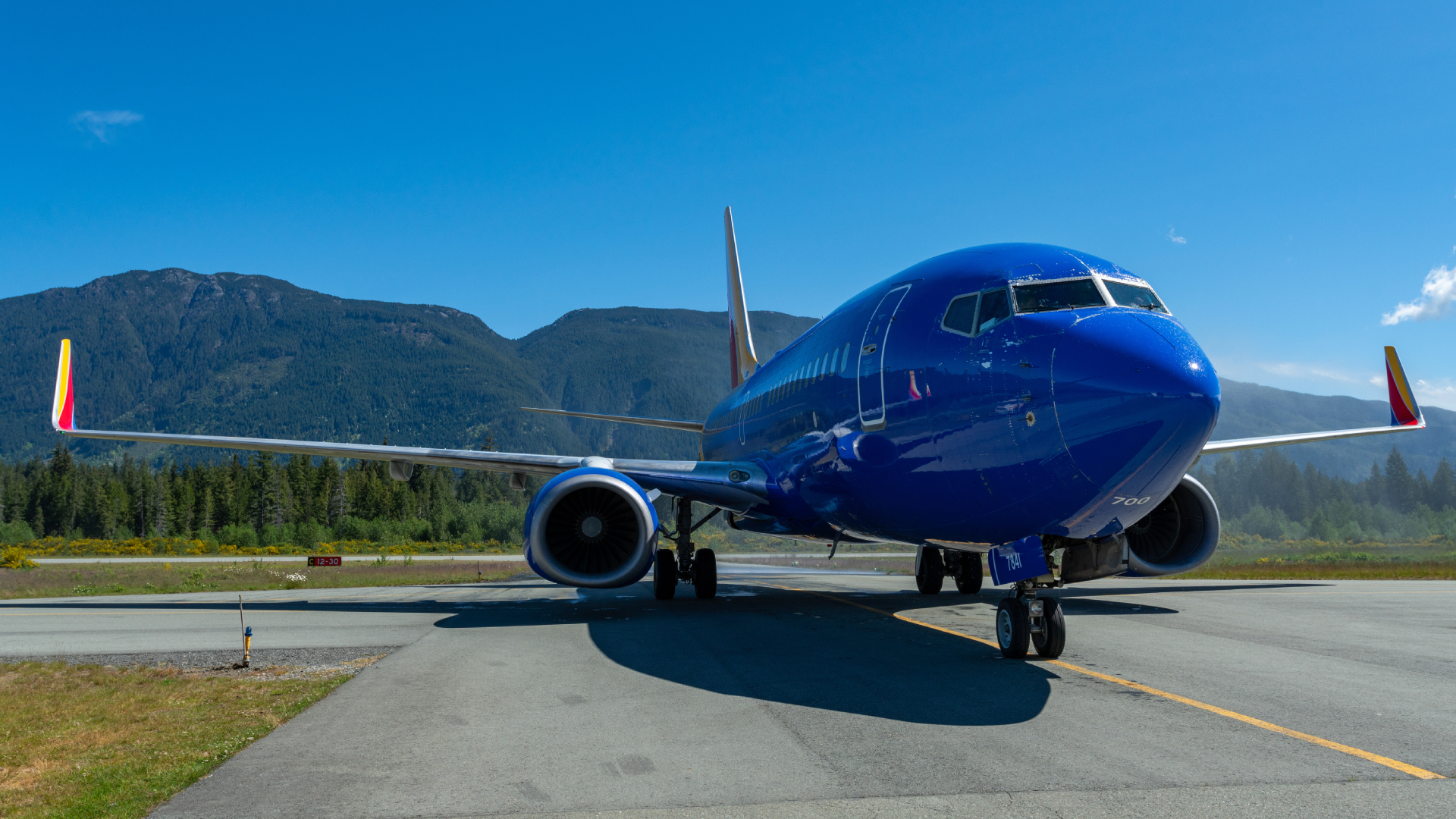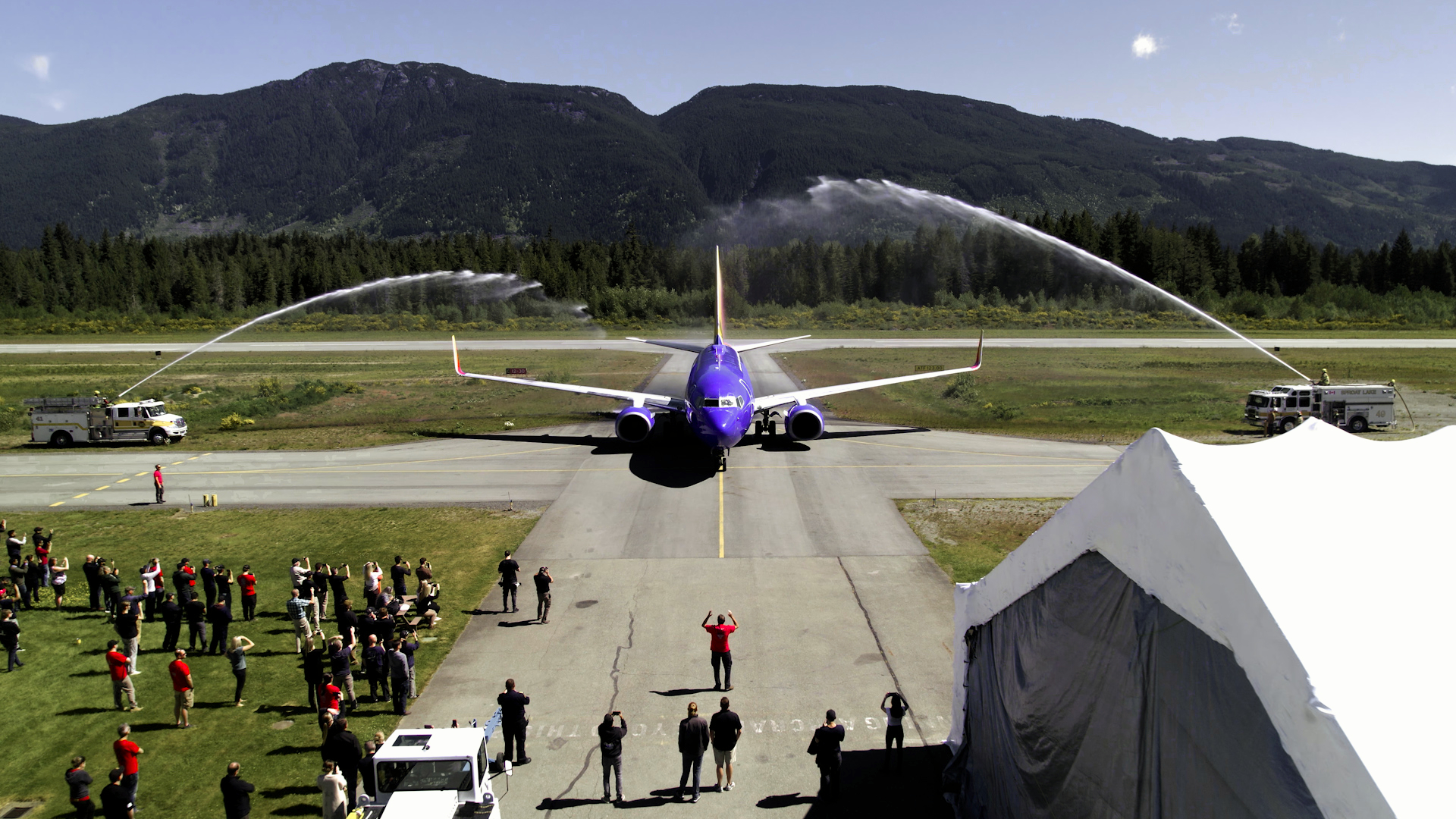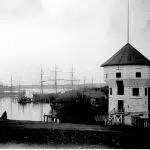
‘Newer, more capable aircraft:’ Boeing 737 lands in Port Alberni ahead of water tanker refit
PORT ALBERNI — The future of water bomber development on Vancouver Island has officially touched down.
Staff from Coulson Aviation watched on as a former Southwest Airlines Boeing 737-700 NG airliner landed at the Alberni Valley Regional Airport just after 11 a.m. on Wednesday, May 22 after a quick trip over from Everett, Washington via Vancouver.
President and chief operating officer of Coulson Aviation, Britton Coulson said the plane is a follow-up on the immensely successful 737-300 and represents the next generation of air tankers.
“This is going to have a higher payload, flies faster and is more fuel efficient. They operate all over the world and have been flawless with what they’ve done. As we look to expand, we look to continue to create newer, more capable aircraft.”






